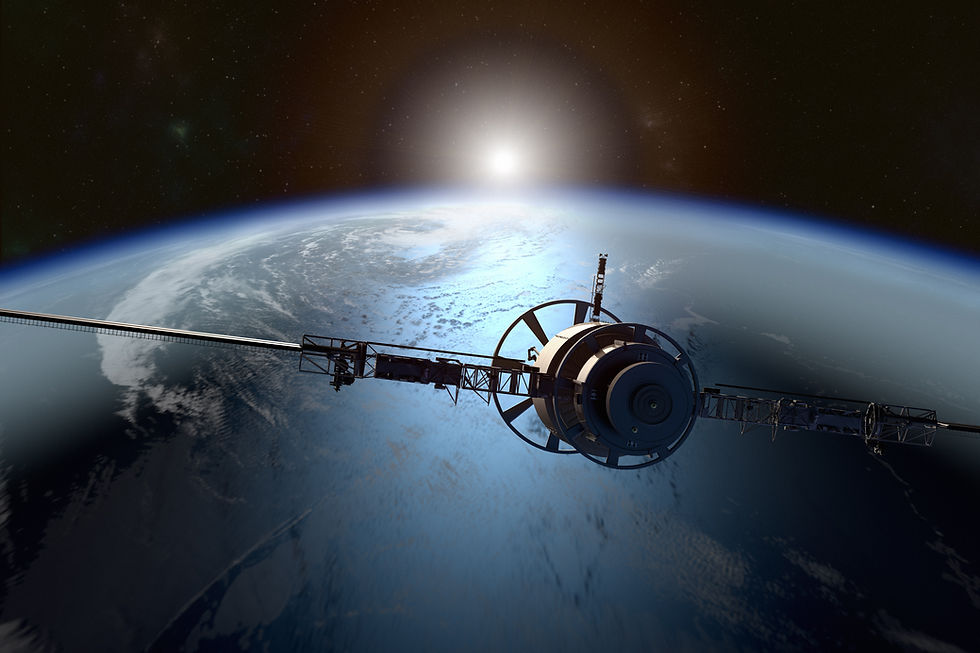Which countries are driving space tech innovation?
- Teenspire Global

- Apr 9, 2021
- 3 min read

Whoosh! Ready to take of in 3...2...1
The space industry has come a long way ever since it’s first mission in 1957. A report suggests in 2017, more than 58 countries spent more than $10 million on their space programmes. The shift in thinking and a mindset of exploring space for humanity’s greater good is the right way to go about it. The increasing adoption of space launch services for satellites and testing probe application is one of the most significant factors driving the growth of the global space industry. Below are the countries driving the charge:
1. USA - NASA (National Aeronautics and Space Administration)
The USA along with NASA is spearheading from the front when it comes to the utilisation of space technology. Very recently, NASA awarded contracts worth $370 million to various space tech startups for its ambitious moon exploration push. NASA is renowned for it’s famous space missions such as the Apollo moon-landing missions, the Skylab space station, Space Shuttle, International Space Station (ISS), Mars Exploration Rover.
2. China - CNSA (China National Space Agency)
With the 2nd largest fleet of spacecraft constellations of navigation satellites, remote sensing satellites, communication satellites, surveillance and spacecraft in operation, China is racing to be a space superpower. China’s major space program includes Tiangong-1 space station, Shenzhou manned space flight programme and the Chinese Lunar Exploration Programme. Beijing based space tech startup, i-Space ,after preparing for it’s third launch, has its eyes on conquering the space tourism industry.
According to Euroconsult, an industry consulting firm, Launching miniature satellites, which typically weigh less than 220 lbs., will become a $15 billion industry by 2027 in China alone. C-space a Chinese company has already built a simulation room which resembles Mars’s conditions for Chinese astronauts to train. It definitely looks like China is leading the race to put the first humans on Mars.
3. Russia - Roskomos (Russian federal space agency)
Russia was one of the first countries to launch a space mission in 1957, the Sputnik 1. The country now has the third largest fleet of spacecraft including communications, meteorological and reconnaissance satellites. Its major space programmes include Soyuz manned spacecraft, Salyut 1 space station and Lunokhod 1 space rover.
On July 15th 2020, a Russian satellite called Kosmos 2543 released an unknown object into orbit, according to US Space Command. This may be an anti-satellite weapon, the USA. In April this year, US Space Command confirmed that Russia had conducted another test of its ground-based missile system, designed to take out satellites in space, called Nudol. As much good as space tech can do, it may also have it’s cons which we should be well aware of.
4. United Kingdom - UKSA (United Kingdom Space Agency)
The United Kingdom launched its first satellite Ariel 1 in 1962. The UK is one of the largest sponsors to the European Space Agency (ESA) and participated in several major space missions including BepiColombo, Euclid and ExoMars Rover carried out by the ESA. The UKSA is giving over $1.31 million to seven firms to help advance novel sensor technologies and the smart algorithms needed to interpret their data.
The funded projects are as below-
Lift Me Off - To come up with machine-learning and artificial intelligence techniques to distinguish between satellites and space junk.
Deimos and Northern Space and Security: To both develop a new range of optical sensors to track space objects from the UK.
Andor: To increase the sensitivity and speed of its camera detector technology to map and track ever smaller sized debris objects.
D-Orbit UK: To enhance the use of recently launched sensors to capture images of, and characterise, objects moving around a spacecraft.
Fujitsu: To also develop machine-learning approaches and quantum-inspired processing to improve mission planning to remove debris.
Lumi Space: Responsible for developing laser ranging technology to again spot, characterise and precisely track objects in orbit.
5. India - Indian Space Research Organisation (ISRO)
India started its first space mission in 1975. In 2013, ISRO was lauded for its efforts for launching a Mars orbiter mission for $75 million, spending approximately one-tenth of what NASA did on the MAVEN Mars mission.
India has around 300 private space technology companies, majority of them being suppliers to ISRO. With the new space policies just being announced, India has opened up private investments in its space sector. Indian firms can not only use existing assets for communication services, but also develop new systems, launch satellites and sell their services to foreign customers.
Meanwhile, with the advent of private space missions and space tourism we are looking at a new era of opportunities, innovation and at the same time consequences we must be prepared for. Until then, let’s keep following the countries that are disrupting space.
.jpg)






Comments